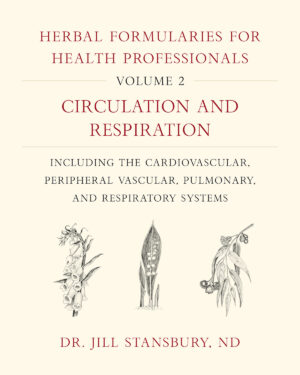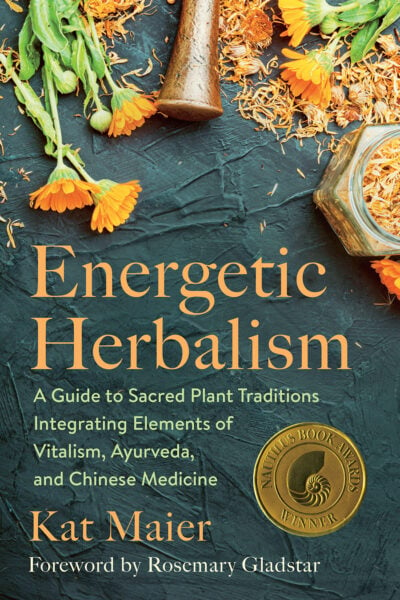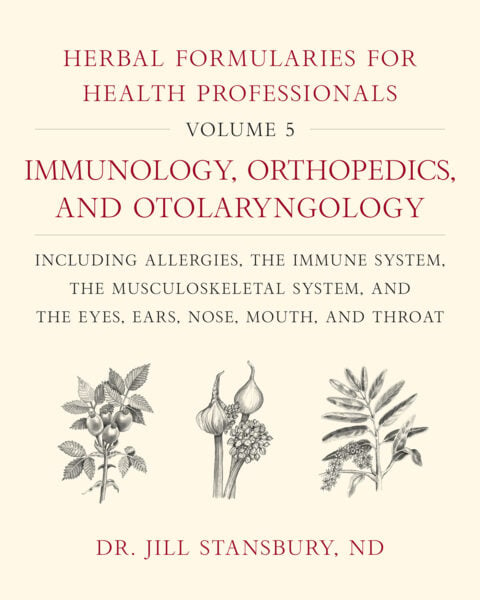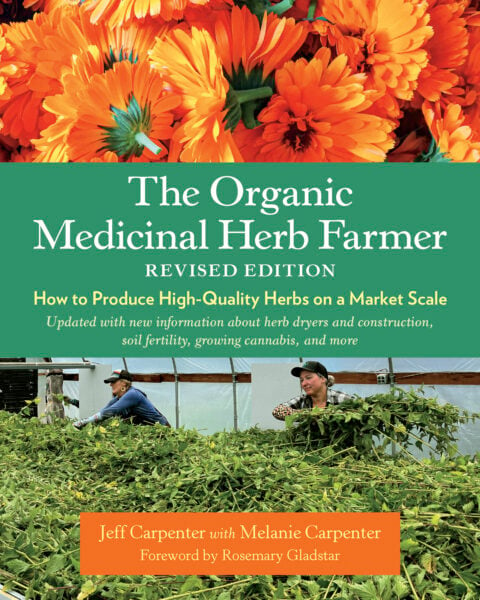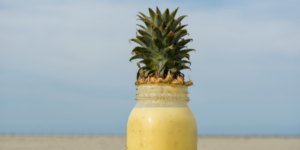How to Decipher and Soothe Coughs: A Guide to Getting Through Cold & Flu Season

During cold and flu season, finding an alternative way to soothe coughs could save you an unnecessary trip to the doctor’s office. Understanding different kinds of coughs and how to identify them can also provide comfort and peace of mind.
Keep in mind that for symptoms that go beyond the common cold, you should always consult with a doctor.
The following excerpt is from Herbal Formularies for Health Professionals, Volume 2 by Dr. Jill Stansbury, ND. It has been adapted for the web.
Formulas to Soothe Coughs
Coughs and altered breathing of various types are the primary respiratory symptoms, and they may be representative of a variety of diagnoses. In this section, I begin by addressing how an herbal clinician might create formulas that address a variety of types of cough.
I follow this with a more specific discussion of the diagnostic headings that typically involve coughing and altered breath sounds.
It is often more effective to create a formula that addresses the quality of such symptoms—such as hacking, dry, wet, spastic, tight, or burning—rather than the underlying diagnosis of bronchitis, pleurisy, asthma, or other conditions, because many herbs are appropriate for a variety of respiratory diagnoses.
It is the quality of the symptoms that helps the herbalist choose which herbs to include in a formula, as much as or more so than the diagnosis of a condition.
Coughs: Where Do They Come From?
Coughs may be triggered by muscle spasms in the throat and bronchi due to the presence of mucus, a chemical or particulate irritant, or an allergic irritation. Coughing may also be a nervous habit or even an unconscious tic. Each underlying cause may be treated accordingly.
Coughing may be a healthy and appropriate function to rid the airways of excessive mucus. However, when coughing is vigorous and persistent, it can be exhausting and injure the ribs over time, and the cause must be addressed.
In many cases, the underlying cause is a simple rhinovirus or other viral infection, often referred to as an upper respiratory infection (URI), or the “common cold.” URIs are self-limiting, meaning that even with no treatment, the infection will often resolve on its own.
However, herbal therapies can provide palliative comfort, shorten the duration and severity of an infection, reduce chronicity in those who suffer numerous colds each year, and help to avoid complications for those whose URIs tend to progress to ear infection, sinus infection, or bronchitis.
The Different Types of Coughs
Folkloric herbals often mention the symptom of “hemming,” referring to those who must clear their throats throughout the day due to mucous accumulation.
URIs, hemming, postnasal drip, and similar presentations can be improved with immune support, avoidance of dairy products or other mucus-forming foods, and the use of mucolytic, drying antimicrobial herbs such as Hydrastis spp., Rosmarinus officinalis, Allium spp., Berberis aquifolium (also known as Mahonia aquifolium), Achillea millefolium, Thymus vulgaris, Euphrasia officinalis, or Commiphora myrrha.
Folkloric texts also refer to “hacking” coughs, where muscular spasms in the bronchi, diaphragm, and/or intercostal muscles are involved. Hacking coughs are best treated with respiratory antispasmodics such as Thymus, Lobelia inflata, Ammi visnaga, and Prunus, all noted for their ability to affect bronchial smooth muscles.
Identifying Cough Qualities
 People presenting with coughs describe the quality of their cough in different ways, such as tight and dry feeling, moist with much expectoration, spastic and painful in the chest, or burning and painful in the throat.
People presenting with coughs describe the quality of their cough in different ways, such as tight and dry feeling, moist with much expectoration, spastic and painful in the chest, or burning and painful in the throat.
In general, a cough associated with abundant expectoration occurs in children or allergic individuals and most often at the onset of a URI or an allergic episode, such as rhinosinusitis.
Using Herbal Formulas for Cough Qualities
Coughs that are nonproductive and described as having a tight, dry sensation occur most often in chronic conditions, such as in a long-term smoker.
A logical approach to creating herbal formulas for such qualities of coughing are to include moist demulcent herbs for hot, dry, tight sensations and drying herbs for damp, abundantly productive situations.
Herbs with drying actions on the airways include Hydrastis, Thymus, Salvia officinalis, and Achillea. Mucilaginous herbs with demulcent qualities include Glycyrrhiza glabra, Petasites hybridus, Tussilago farfara, Symphytum officinale, Ulmus fulva, and Althea officinalis.
Codeine: Not Recommended by Herbalists
Codeine, although a classic cough syrup ingredient of natural origin and somewhat effective, is not preferred by herbalists, due to its sedating and potentially addictive effects. Children should not be treated with codeine due to the risk of respiratory suppression. Many effective nonopioid herbal options are available, and thus finely tuned cough syrups and formulas are preferable.
Wheezing and Stridor
Other altered breath sounds include wheezing, typical of asthma; stridor, typical of upper laryngeal spasms; and rhonchi, typical of bronchial tone issues. These are described in “The Cough Reflex” sidebar on page 115.
When a cough or altered breath sounds do not appear to correlate with smoking, an infection, an allergy, or recent exposure to a chemical or particulate irritant, clinicians must rule out other underlying causes, which could range from a lung lesion or tumor to pulmonary emboli, especially if lung pain and systemic symptoms are present. Chest X-rays are a useful screening test to rule out lung lesions. Pulse oximetry, blood gases, and spirometry can also provide useful information.
Understanding Reflux Disease
Gastroesophageal reflux disease, commonly referred to as reflux disease or GERD, can present as a cough due to the irritating effects of stomach acid on the throat and esophagus. Some medications will induce coughs as a side effect, particularly ACE inhibitors used to treat hypertension, and all medication should be reviewed when no other obvious cause of coughs is apparent.
Throat and ear lesions, and even something as simple as impacted cerumen, can trigger coughing. I once saw a patient with a troublesome cough due to a small hair stuck to the tympanic membrane; the cough resolved once I irrigated out the hair.
Some cases of asthma present without wheezing, but rather with a chronic spastic cough, referred to as cough-variant asthma. Some people may attempt to mask Tourette Syndrome’s vocalizations with a cough.
Asthma and Respiratory Issues
Wheezing is most often associated with asthma and respiratory allergies and is typically episodic, occurring in allergic individuals in obvious association with allergen exposure. However, wheezing may also occur with other conditions.
A lung lesion, such as a tumor, may produce a wheezing sound in the location of an obstruction, and when alterations to the voice accompany wheezing, a vocal cord or throat lesion may be the underlying cause. Wheezing in association with circulation insufficiency indicates a cardiac pathology.
When wheezing is accompanied by fever and expectoration, it’s possible that an underlying infection is triggering bronchospasm.
What Is Stridor?
Stridor is a high-pitched, squeaky sound that occurs with inspiration and is most often due to blockage or constriction in the throat or upper airways.
Edema in the upper airways may also produce stridor; the edema may occur with anaphylaxis or other allergic phenomena, as well as upper throat, larynx, or vocal cord lesions, tumors, and abscesses.
When stridor presents with a severe sore throat, a retropharyngeal abscess is possible, or with unusual salivation and drooling, epiglottitis is likely.
When there has been progressive or long-standing hoarseness or vocal change, a laryngeal or vocal cord lesion is likely. An aspirated foreign body may be the underlying cause of stridor in a toddler, and some atopic individuals can develop laryngeal spasm as part of an allergic phenomenon. Diagnostic imaging may be required to further assess underlying causes of stridor.
Stridor Considerations: Simple Soothing
Stridor due to allergic hyperreactivity may be improved by antiallergy herbs such as Angelica sinensis, Ginkgo biloba, Curcuma, Scutellaria baicalensis, Glycyrrhiza, or Foeniculum vulgare. When underlying infections present with enlarged tonsils, or when there is thick or choking mucus present, Hydrastis, Commiphora, or Phytolacca spp. may be helpful.
Simple soothing agents will allay vocal cord irritation due to dust, overuse of the voice, and exposure to chemical fumes, especially the antiallergy demulcents Tussilago and Petasites.
Be cautious about using undiluted tinctures for those with epiglottitis or allergic reactivity in the throat, as such tinctures could worsen laryngeal spasm and lead to acute dyspnea and airway obstruction in some sensitive individuals.
Use teas or lozenges, or dilute the tinctures in a small glass of water and take in small sips over time in cases of acute epiglottitis.
All-Purpose Herbal Cough Syrup
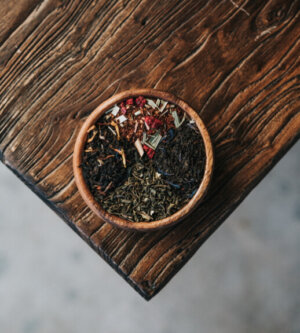 This all-purpose cough syrup features herbs most emphasized in the folklore for simple coughs.
This all-purpose cough syrup features herbs most emphasized in the folklore for simple coughs.
In fact, Tussilago means “cough dispeller” in Latin. Cherry bark (Prunus serotina) contains spasmolytic hydrocyanide compounds, relied upon for generations as a base ingredient in cough formulas.
Licorice teas and syrups are useful for treating cough and have been included in a wide variety of traditional cough formulas.
Ingredients
- 4 ounces (120 g) Ligusticum porteri root
- 2 ounces (60 g) Prunus spp. bark
- 2 ounces (60 g) Tussilago farfara root
- 2 ounces (60 g) Glycyrrhiza glabra root
- 2 ounces (60 g) Zingiber officinale root
- 2 ounces (60 g) Lobelia inflata leaves2 ounces (60 g) Thymus vulgaris leaves
- 2 quarts (2 liters) Honey
- 1⁄4 ounce (8 ml) Citrus aurantium (bitter orange) essential oil
- 1⁄4 ounce (8 ml) Foeniculum vulgare (fennel) essential oil
Instructions
On low heat, gently simmer the dry herbs in 2 gallons of water until reduced down to 1 gallon. Strain and add the honey to the liquid over low heat. Dissolve the honey fully, using a spoon to skim any scum that forms on the top.
Remove from the heat, and allow to cool to room temperature before adding the bitter orange and fennel essential oils. Pour quickly into bottles before the oils have a chance to evaporate. Take by the teaspoon for coughs, as often as hourly, reducing as symptoms improve.
Recommended Reads
Recent Articles
Garlic mustard: while known as “invasive,” this plant can be consumed in its entirety and has great nutritional value. Plus, the garlic-flavor is a perfect addition to any recipe that calls for mustard! The following are excerpts from Beyond the War on Invasive Species by Tao Orion and The Wild Wisdom of Weeds by Katrina…
Read MoreMany know the effects of catnip on our feline friends, but few realize that catnip has medicinal effects for humans. From stomach aches to reducing fevers, catnip is a versatile herb with many benefits. The next time you grow this plant for your cat you may end up taking a few cuttings for yourself! The…
Read MoreWhether you’re looking to replace your end-of-the-day cocktail, relax before bed, or want something new to add to your tea, this non-alcoholic mocktail syrup base will do the trick. Delicious and all-natural, take a sip of this nightcap mocktail and feel your troubles melt away. The following is an excerpt from Herbal Formularies for Health…
Read MoreSurprisingly, medicine can actually be delicious. This anti-inflammatory smoothie uses natural (and tasty!) ingredients to help reduce inflammation caused by any number of circumstances. The following is an excerpt from Herbal Formularies for Health Professionals, Volume 4 by Jill Stansbury. It has been adapted for the web. RECIPE: Ginger and Pineapple Anti-Inflammatory Smoothie This is an all-purpose…
Read MoreMake your own delicious, healthy, probiotic sauerkraut! Four easy steps are all you need to turn fresh garden veggies into a long-lasting, tangy, pungent condiment. The following excerpt is from The Art of Fermentation by Sandor Ellix Katz. It has been adapted for the web. 4 Simple Steps to Making Sauerkraut The English language does…
Read More

